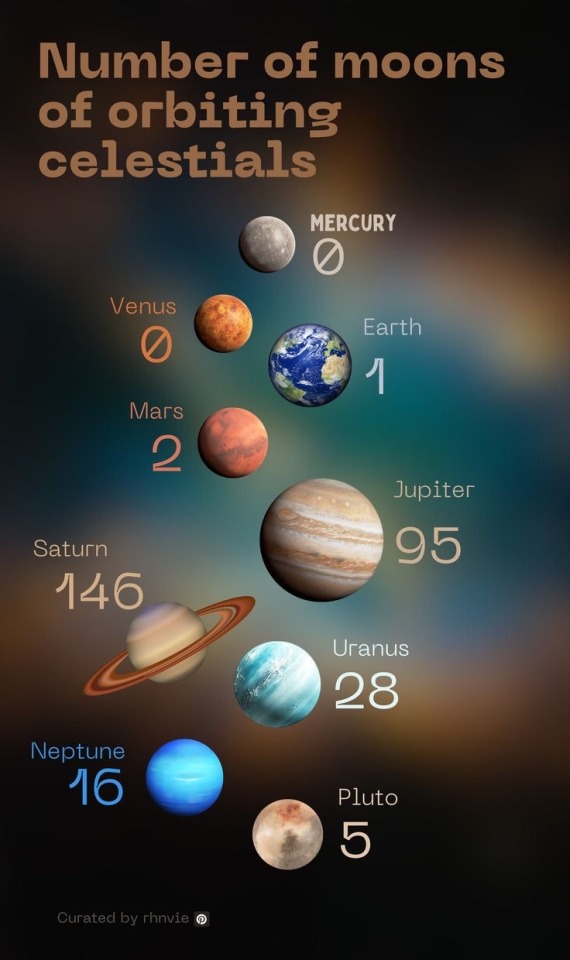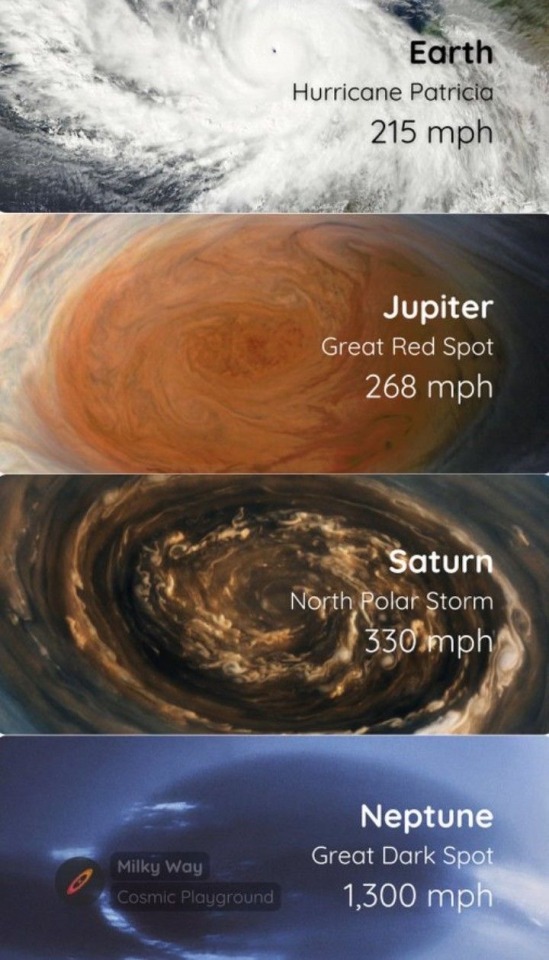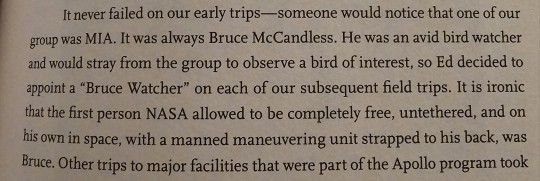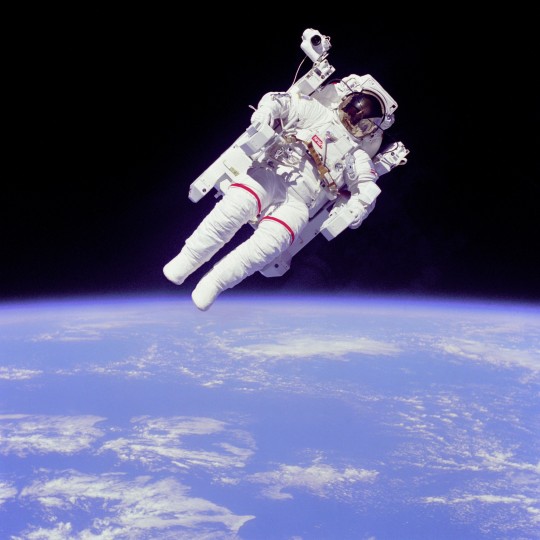#NASA Astronauts
Explore tagged Tumblr posts
Text


#space facts#astronomy facts#science facts#fun facts#facts#astronomy#nasa#astronomers#universe#nasa photos#astrophotography#outer space#astrophysics#nasawebb#hubble space telescope#space shuttle#sky#our universe#the universe#international space station#space science#space exploration#space#james webb space telescope#nasa science#planetary science#science#astrography#nasa astronauts#planetary nebula
2K notes
·
View notes
Text

Stepping out on the front porch. Astronaut David Scott opens the hatch to check out the view during Apollo 9, March 1969. In this pic taken by fellow astronaut Rusty Schweickart, ‘Gumdrop’, the Command Service Module is docked with ‘Spider’, the Lunar Module. A9 was the 1st flight incorporating all Apollo spacecraft components. The 10 day mission was the 2nd launched by a Saturn V rocket.
#apollo 9#spacecraft#command module#low earth orbit#astronaut#space travel#1969#earth orbit#astronauts#space exploration#vintage space#space#space age#nasa#moon landing#space race#spaceflight#nasa astronauts#nasa photos#space history#spacesuits#1960s
409 notes
·
View notes
Text

For Black History Month, here’s a piece I did for Black History Month last year of the first black woman in space, Dr. Mae Jemison! Also the first person of whom there’s pictures doing her job on a spaceship in two totally different contexts due to her brief appearance in Star Trek: The Next Generation, as the first real astronaut to cameo in Star Trek!
#star trek#star trek tng#star trek the next generation#mae jemison#dr mae jemison#astronaut#nasa#nasa astronauts#black history#black history month#black history matters
22 notes
·
View notes
Text

View From Here
Astronaut Tracy Caldwell Dyson looks down on Earth while serving as the flight engineer on Expedition 24 to the International Space Station. August 29, 2020
Photograph by NASA, Nat Geo Image Collection
#nationalgeographic.com#reddit#spaceporn#busy_yesterday9455#08/29#view from here#photography#whm#chemist#earth#expedition 24#photo credit nat geo image collection#tracy caldwell dydon#view#flight engineer#iss#international space station#stem#2020#2020s#women in stem#nasa astronauts#history#womens history#womens history month#photo credit nasa
32 notes
·
View notes
Text




#tiktok#nasa astronauts#nasa science#nasa#sunita williams#butch wilmore#suni williams#space#outer space#fuck capitalism
18 notes
·
View notes
Text
NASA launches probe to explore possible life on Jupiter’s icy moon
NASA’s Europa Clipper probe rocketed from Florida to Jupiter’s icy moon to find out if conditions to sustain life existed there.
The launch aboard a powerful SpaceX Falcon Heavy rocket took place shortly after noon (16:00 GMT) on Monday, 14 October. The probe is expected to reach Jupiter’s moon Europa in five and a half years.
NASA later confirmed that it had successfully received a signal from the probe, with its massive solar panels, designed to capture the faint light reaching Jupiter, fully unfolded. The mission will allow the US space agency to discover new details about Europa, which NASA official Gina DiBraccio believes may harbour an ocean beneath its icy surface.
With Europa Clipper, we’re not searching for life on Europa, but we’re trying to see if this ocean world is habitable, and that means we’re looking for the water. We’re looking for energy sources, and we’re really looking for the chemistry there, so that we can understand what habitable environments might be throughout our whole universe.
The 30-metre-wide probe, with its solar panels fully extended, is the largest NASA has ever built for interplanetary exploration. Europa Clipper programme scientist Curt Niebur said the journey could reveal “a world that could be habitable today, right now.”
Europa has been known to exist since 1610, but the first close-up images were taken by the Voyager probes in 1979. The next probe to reach Jupiter’s icy moon was NASA’s Galileo in the 1990s, which found that the moon was likely to have an ocean.
Purpose of the mission
The mission will try to determine the structure and composition of Europa’s surface, its depth and even the salinity of the ocean. The goal is to see if the three ingredients necessary for life are present: water, energy and certain chemical compounds.
Bonnie Buratti, the mission’s deputy project scientist, explained that life could be found in the ocean in the form of primitive bacteria. However, the bacteria may be too deep to be detected by the Europa Clipper.
During its journey, the probe will cover 2.9 billion kilometres. It is expected to arrive in April 2030. The main mission will last another four years. Europa Clipper will make 49 flybys over the satellite, getting as close as 25 kilometres to its surface.
NASA says the $5.2bn mission over about a decade is justified by the importance of the data that will be collected. About 4,000 people worked on the project.
Europa Clipper will operate simultaneously with the European Space Agency’s (ESA) Juice probe, which will study two other moons of Jupiter, Ganymede and Callisto.
Read more HERE

#world news#news#world politics#nasa#nasa science#nasa astronauts#astronomy#jupiter#icy moon#space#space exploration#space travel#space science#planet#galaxy
18 notes
·
View notes
Video
fut-lnr_v_bw_o_n (ca. 1961, unnumbered press photo) by Mike Acs Via Flickr: “Wonders of the Universe: Scientists ‘Tailoring…?’ Within the next 12 months, either a Project Mercury astronaut or his Russian counterpart will be orbiting the earth. Yet, even at this late date, no suitable space suit has been developed which would permit the astronaut to move freely into the hostile environment of space outside the satellite or around on the lunar surface. While in the past, the problem of designing an acceptable space suit was not considered difficult, as the time approaches when the suit should become operational it no longer appears an easy task. To point up the difficulty of this problem, at least three companies are engaged actively in trying to design a suit to cope with space conditions.” At this point, unfortunately, the affixed newspaper caption has been cut off…aaargh. I would’ve loved to have read the rest of it! I I wish there was a repository of Dr. Levitt’s “Wonders of the Universe” articles. And if there is, I haven’t found it. There are too many wonderful, quirky, impeccable, amusing, implausible, etc., etc. things going on here to enumerate. John Gorsuch…’nuff said. Enjoy.
#black and white#Glossy Photo#Artist’s Concept#Artist’s Rendering#Artist's Conception#Artist's Depiction#Artist Concept#Artist Rendering#Artist Conception#artist depiction#Lunar Surface#Lunar Lander#Lunar Landing#Lunar Module#Lunar Excursion Module#Cargo Lunar Excursion Module#lunar spacecraft#Extravehicular Activity#moonwalking#Moonwalkers#Moonwalk#Manned Spacecraft#Manned Space Flight#Human Space Flight#NASA Spacecraft#NASA#NASA Astronaut#NASA Astronauts#Footprints on the moon#boot prints on the moon
3 notes
·
View notes
Text


WILLIAM ANDERS (1933-Died June 7th 2024,at 90.Plane crash).American United States Air Force (USAF) major general, electrical engineer, nuclear engineer, NASA astronaut, and businessman. In December 1968, he was a member of the crew of Apollo 8, the first three people to leave low Earth orbit and travel to the Moon. Along with fellow astronauts Frank Borman and Jim Lovell, he circled the Moon ten times, and broadcast live images and commentary back to Earth, including the Christmas Eve Genesis reading. During one of the mission's lunar orbits with Apollo 11, he took the iconic Earthrise photograph,on Christmas Eve 1968.Earthrise - Wikipedia
#William Anders#American Astronauts#NASA Astronauts#NASA#Apollo 11#Earthrise#Earthrise photrograph#Notable Deaths in June 2024#Notable Deaths in 2024
3 notes
·
View notes
Text

Hilariously funny that the guy known for wandering off without warning to look at birds was allowed to do this

82K notes
·
View notes
Text
youtube
DOGE Protestors Turn Their Focus on Tesla & Delayed NASA Astronauts Make It Home | The Daily Show
youtube
GOP Pumps Tesla As Trump Admin Flubs JFK File Release & DEI Scrubbing | The Daily Show
#DOGE#Protestors#Tesla#NASA Astronauts#The Daily Show#NASA#Jordan Klepper#News#Youtube#Republicans#Trump Administration#JFK#DEI Ban#Diversity Ban
1 note
·
View note
Text
#Astronaut Recovery#Astronaut Rehabilitation#Butch Wilmore#Human Spaceflight#ISS Crew#ISS Return#NASA#NASA Astronauts#NASA Updates#Space Exploration#Space Mission#Space News#Space Science#Space Travel#Sunita Williams
0 notes
Text






One of the clearest sharpest images of our moon ever taken! 5000 megapixels
#astronomy#astronomers#nasa#universe#nasa photos#astrophotography#outer space#astrophysics#nasawebb#hubble space telescope#moon pics#moon photography#moon craters#moon landing#moon phases#man on the moon#full moon#moon#sun and moon show#space exploration#space#astronomy photography#i love astronomy#astronomy facts#astronomy picture of the day#planetary nebula#our universe#solar system#nasa astronauts#space travel
1K notes
·
View notes
Text

The view ain’t all that bad. Apollo 9 astronaut David Scott takes it all in in this epic photograph by crewmate Rusty Schweickart, March 1969. The 10-day mission commanded by James McDivitt saw the first crewed flight of the Lunar Module.
#apollo 9#astronauts#nasa#space travel#the earth#astronaut#space exploration#vintage space#space age#apollo program#historic#space#space race#nasa astronauts#nasa photos#nasa picture of the day#space program#1960s#1969#outer space
270 notes
·
View notes
Text
NASA astronauts return after an unplanned nine-month mission in space.

NASA astronauts Suni Williams and Butch Wilmore have finally returned to Earth after an unexpectedly extended stay in space.
Originally, the duo planned to spend just a week aboard the International Space Station (ISS) following their June launch on Boeing's Starliner spacecraft. However, due to technical issues, their stay stretched to over nine months.
At last, Williams and Wilmore have splashed down safely, returning to Earth inside a SpaceX Dragon capsule. They departed the ISS at 1:05 a.m. ET on Tuesday, alongside NASA astronaut Nick Hague and Russian cosmonaut Aleksandr Gorbunov. The four-person team, known as Crew-9, landed off the coast of Florida at approximately 5:57 p.m. ET. Read More.....
#nasa astronauts return spacex dragon#astronauts#astronauts return to earth#butch wilmore#why were the astronauts stuck in space#nasa astronauts#spacex rescue#sunita williams return#international space station#crew 9#nasa live stream#spacex#why were astronauts stuck in space#how long were the astronauts stuck in space#did the astronauts make it home#splash down today#stranded astronauts#astronauts stuck in space#space x#splashdown#are the astronauts back yet#suni williams and butch wilmore#astronaut#space station#where did the astronauts land today#spacex landing today#splashdown time today#spacex dragon#spacex splashdown#splash down
1 note
·
View note
